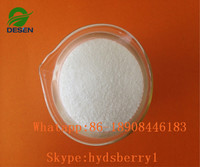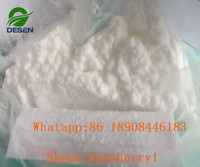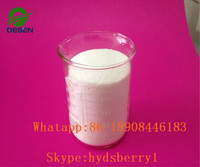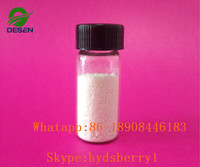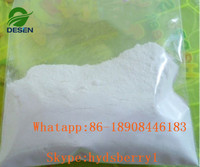Linalool
Product Quick Detail
- FOB Price
- USD $18.00 / Piece
- Minimum Order
- 1
- Place Of Origin
- hunan
- Packaging
- b ags
- Delivery
- 15 Days
Specifications
Product Name:Linalool
CAS:78-70-6
MF:C10H18O
MW:154.25
EINECS: 201-134-4
Boiling point:199 °C
Density: 0.87 g/mL at 25 °C(lit.)
Solubility ethanol: soluble1ml/4ml, clear, colorless (60% ethanol)
Form:Liquid
Color:Clear colorless to pale yellow
Water Solubility:1.45 g/L (25 oC)
Merck: 14,5495
BRN: 1721488
Stability: Stable. Incompatible with strong oxidizing agents. Combustible.
Product Categories: Acyclic Monoterpenes;Biochemistry;Terpenes;alcohol Flavor;Theobroma cacao (Chocolate);Vaccinium myrtillus;pharmaceutical intermediate;phytochemical;reference standards from
Chinese medicinal herbs (TCM).;standardized herbal extract;Cosmetics
Chemical Properties:It is colorless liquid with fragrance similar with bergamot. It is insoluble in water, but miscible with ethanol and ether.
Description:
Linalool is a kind of terpene alcohols and is one kind of famous perfume compounds. It is the mixture of two isomers (α-linalool and β-linalool). It is extracted from camphor oil (from camphor
tree) or synthesized from the α-pinene or β-pinene contained in turpentine. It is colorless oily liquid with sweet and tender fresh flowers and a fragrance of Convallaria majalis. It is easily
soluble in organic solvents such as ethanol, ethylene glycol and diethyl ether but insoluble in water and glycerol. It is easily subject to isomerization and is relatively stable in alkali. It has
a density (25 ℃) of 0.860~0.867, the refractive index (20 ℃) of ??1.4610~1.4640, optical rotation (20 ℃) of ??-12 ° ~-18 °, the boiling point being 197~199 ℃, and the flash point (open ended) of 78
℃. Linalool with alcohol content higher than 95% is an important spices for floral fragrance used for perfumes, soaps and other fragrance industry. It is also widely used in flowers oils of lending
lily, lilac, sweet pea, and orange blossom as well as the compound perfume of amber incense, oriental fragrance, and aldehyde-type fragrance, cosmetics perfumes and food flavor. It can also be used
as the spices of lemon, lime, orange, grape, apricot, pineapple, plum, peach, cardamom, cocoa, and chocolate. Drug containing 92.5% alcohol content is used as the raw material drugs in the
pharmaceutical industry for producing isophytol which is an important intermediate in the preparation of vitamin E. It can also be used as raw material for producing valuable spices linalyl acetate
and some other esters. Linalool belongs to open chain terpene tertiary alcohol. It has two double bonds. However, it contains an asymmetric carbon atom, so it has three kinds of optical isomers. In
Nature, all three kinds of isomers are present with the amount of I-body being the highest, accounting for 70% to 80% of the total amount of the three. I-body is mostly presented in linalool oil
(containing about 80 to 90%), champa, lavender oil, lime oil, neroli oil, clary sage oil, aloeswood oil, lemon oil, rose oil, cananga orodrata oil and some other kinds of essential oil; its d-body
is mostly presented in coriander oil (containing about 60% to 70%), sweet orange oil, nutmeg oil, palmarosa oil and other kinds of essential oil; its dl-form is mainly presented in the essential
oils of clary sage and jasmine. All the three kinds are transparent colorless oily liquid with lilies and citrus-like fragrance. In addition, because of the close distance between its hydroxy group
and allyl group, its chemical nature is very influential. In the presence of sodium metal in ethanol solution, it can be easily be reduced to generate dihydro-myrcene; in the presence of a platinum
catalyst or Raney nickel catalyst, it can be reduced to the tetrahydro linalool to become saturated alcohol. Owing that it is a kind of tertiary alcohol, in strongly acidic medium, it can subject
to isomerization; in dilute acid medium, it undergoes dehydration to become esters. It is stable in alkaline medium. The LD50 of oral administration for Rat is 2790 mg /kg.
Limited use:FEMA (mg/kg): Soft drinks 2.0; cold drink 3.6; candy 8.4; Bakery 9.6; pudding Class 2.3; gum 0.80 to 90; meat 40.
Uses:
1. It is used for the preparation of cosmetics, soaps, detergents, food and other flavors.
2. GB 276011996 states it is classified into food flavor allowed for temporary use. It is mainly used for the preparation of flavors or aromatic seasoning of pineapple, peach, and chocolate.
3. It is widely presented in flowers, fruits, stems, leaves, roots and green Rosa Chinensis viridiflora. It has a wide range of application, not only for all the floral flavors, such as sweet bean
curd, jasmine, Convallaria majalis, lilac, etc., it can also be applied in fruit flavor type, Fen-flavor type, wood flavor type, aldehyde flavor type, oriental flavor type, amber scent type, chypre
type, fern-type and other non-flower type of flavor. It can also be used in formulating orange leaf, bergamot, lavender, and some kinds of artificial oils such as hybrid lavender oil. It is mostly
used in soap or flavor. It can be used for food flavor.
4. Linalool is a kind of important spices and is the blending raw materials for producing various kinds of artificial oil, also used extensively for the manufacturing of various esters of linalool.
Linalool has an important position in the ester-type perfumes and other cosmetic formulations. Linalool can generate citral through oxidation and can also be used for the synthesis of many other
kinds of spices.
Welcome to our website: desen-steroids.com
Email:berry@desen-nutrition.com
Whatsapp:86-18908446183
- Country: China (Mainland)
- Market: 欧洲,美洲,欧洲联盟,中东,新兴市场,大洋洲,G20
- Founded Year: 2017
- Address: Estee Lin xiang yuan, steamed xiangxiang district, hengyang city, hunan province
- Contact: Berry li



